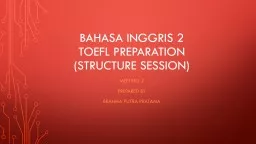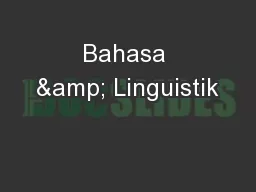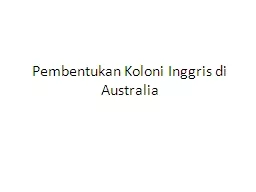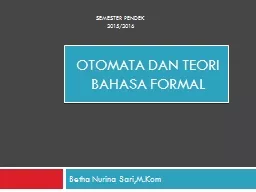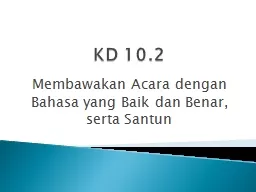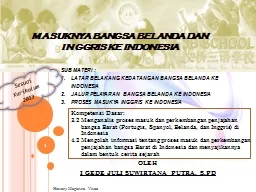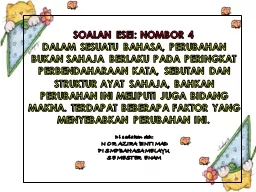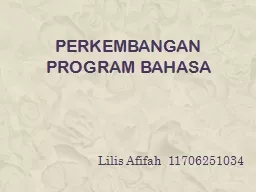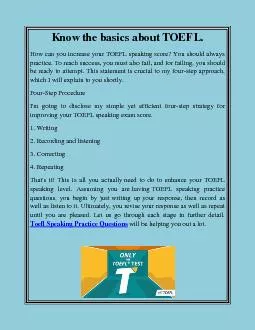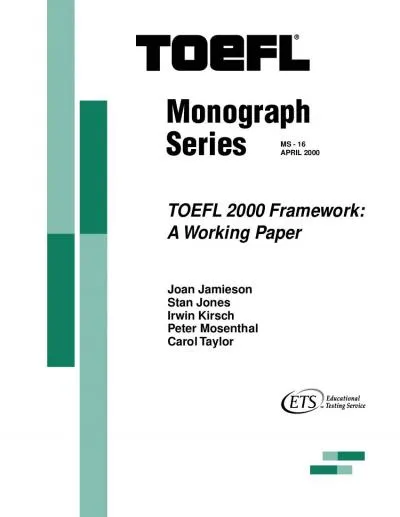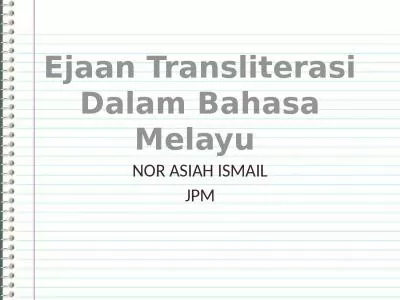PPT-Bahasa inggris 2 toefl
Author : kittie-lecroy | Published Date : 2018-03-20
preparation structure session Meeting 2 Prepared by Brahma putra pratama The verb phrase Simple present tense To indicate a regular or habitual action and condition
Presentation Embed Code
Download Presentation
Download Presentation The PPT/PDF document "Bahasa inggris 2 toefl" is the property of its rightful owner. Permission is granted to download and print the materials on this website for personal, non-commercial use only, and to display it on your personal computer provided you do not modify the materials and that you retain all copyright notices contained in the materials. By downloading content from our website, you accept the terms of this agreement.
Bahasa inggris 2 toefl: Transcript
Download Rules Of Document
"Bahasa inggris 2 toefl"The content belongs to its owner. You may download and print it for personal use, without modification, and keep all copyright notices. By downloading, you agree to these terms.
Related Documents

